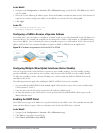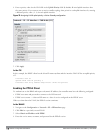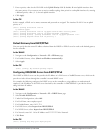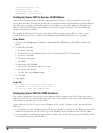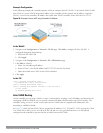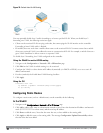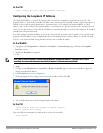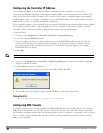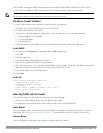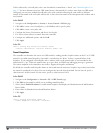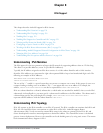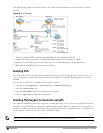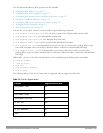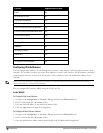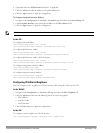
125 | NetworkConfigurationParameters DellPowerConnectW-SeriesArubaOS6.2 | User Guide
Configuring the Controller IP Address
The Controller IP address is used by the controller to communicate with external devices such as APs.
You can set the Controller IP address to the loopback interface address or to an existing VLAN ID address. This
allows you to force the controller IP address to be a specific VLAN interface or loopback address across multiple
machine reboots. Once you configure an interface to be the controller IP address, that interface address cannot be
deleted until you remove it from the controller IP configuration.
If the controller IP address is not configured then the controller IP defaults to the current loopback interface address.
If the loopback interface address is not configured then the first configured VLAN interface address is selected.
Generally, VLAN 1 is the factory default setting and thus becomes the controller IP address.
Using the WebUI:
1. Navigate to the Configuration > Network > Controller > System Settings page.
2. Locate the Controller IP Details section.
3. Select the address you want to set the Controller IP to from the VLAN ID drop-down menu. This list only
contains VLAN IDs that have statically assigned IP addresses. If a loopback interface IP address has been
previously configured then it will also appear in this list. Dynamically assigned IP addresses, for example
DHCP/PPPOE do not display.
4. Click Apply.
NOTE: Any change in the controller’s IP address requires a reboot.
5. Navigate to the Maintenance > Controller > Reboot Controller page to reboot the controller to apply the
change of controller IP address.
6. Click Continue to save the configuration.
7. When prompted that the changes were written successfully to flash, click OK.
8. The controller boots up with the changed controller IP address. of the selected VLAN ID.
Using the CLI
(host) (config) #controller-ip [loopback|vlan <VLAN ID>]
Configuring GRE Tunnels
A controller supports generic routing encapsulation (GRE) tunnels between the controller and APs. An AP opens a
GRE tunnel to the controller for each radio interface. On the AP, the other end of the GRE tunnel is specified by
the IP address configured variable values (in descending order of priority)
<master>
,
<servername>,
and
<serverip>
.
If these variable are left to default values, the AP uses DNS to look up Alcatel-Lucent-master to discover the IP
address of the controller.




